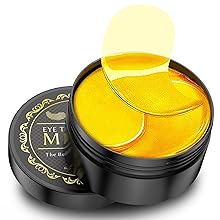Capturing images from a season drawing to a close
The Hindu
As the migratory season draws to a close, here’s a look at some of these birds spotted at wetlands in Chennai -- Eurasian curlew and gulls
Where the Eurasian curlew is concerned, “scraping the bottom of the barrel” connotes the opposite of what it does for us. It finds its very best at the very bottom, in fact deeper still. It probes the mud for crustaceans, the ones that burrow deep in the soil as well as the ones that pop in and out of it at will. At the time of this article going to print, the likelihood of an Eurasian curlew being sighted at Kelambakkam, luxuriating in the mud, surfacing shrimps, unsuspecting crabs and squiggly invertebrates with its long, decurved bill is high.
The late leavers
With a beak like that, piercing through soft, water-filled mud is obviously no sweat off the Eurasian curlew’s speckled back. When a wetland begins to sport as much mud as it does water, it signals a downturn in the gastronomic fortunes for many waterbirds — a familiar picture for those accustomed to watching the Perumbakkam wetland during the winter-migratory season. In stark contrast, the appearance of watery mud does not have a demoralising effect on the Eurasian curlew. Shorebirds that stick tenaciously to water systems that bear a strong whiff of the sea, the Eurasian curlew and its cousin, the Whimbrel, are in an environment affected by tidal action. They will therefore never run out of watery mud, but the biological clock would direct them back to the breeding grounds — only that this clock seems to tick a tad slower than it does for most other water birds in their wintering grounds. Therefore, in a winter migratory season, one might see these two birds tarrying a little while longer than most other water birds. However, variations in decisions taken by individuals on when to take off for the breeding grounds cannot be ruled out.
The brackish waters of Kelambakkam and the estuarine system at Muttukadu host the Eurasian curlew and the whimbrel, and they usually come across as remnants of a migratory horde, waiting in the “boarding area” a few minutes longer, as they take a return flight that taxies in slightly later in the day than the ones taken by most other waders.
Migratory water birds relying on inland wetlands would be hopping in the direct path of climate change. They would be noticeably impacted by effects of erratic rain patterns, particularly untimely drying of wetlands. Pelagic birds — the gulls and terns — are on more favourable ground, as their “play area” is around the shore. They are not immune to erratic and frequent weather systems on the coast, but riding out these storms, they manage to have a full wintering season in the same place. In contrast, birds relying on inland water systems might have to live out of suitcases, chasing resilient water systems when their current one dries up faster than usual.
Due to this stability, when pelagic birds turn their backs on their wintering grounds, they would be leaving with a fully-assembled breeding plumage, one that would come in handy for the business awaiting them at home. You can now see these transformed gulls and terns at the Muttukadu-Covelong estuarine system and the Pulicat lake.
The change is particularly dramatic in the brown-headed and black-headed gulls. What is a spot behind the ear in winter grows into a striking hood when it is time for these birds to return to their breeding grounds. Both birds put on a hood that is brown. In the black-headed gull, the hood is a dark shade of brown, and the other gull sports a lighter shade of the brown. The brown-headed gull is more easily differentiated from its cousin by the lighter shade of the iris (ranging from white to yellow), the thicker bill and two white spots in an otherwise black outer primaries.





















 Run 3 Space | Play Space Running Game
Run 3 Space | Play Space Running Game Traffic Jam 3D | Online Racing Game
Traffic Jam 3D | Online Racing Game Duck Hunt | Play Old Classic Game
Duck Hunt | Play Old Classic Game











